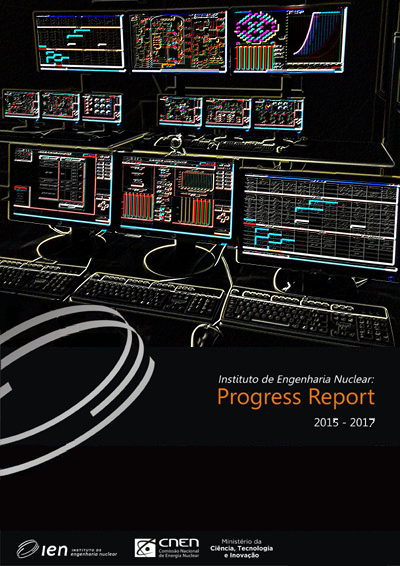A simple capacitance sensor for void fraction measurement in gas-liquid two-phase flow
Palavras-chave:
capacitance technique, void fraction, two-phase flow, gas-liquid flowResumo
In this work we present a simple and inexpensive capacitance sensor for time averaging void fraction measurement of gas-liquid two-phase flow, which was developed at Experimental Thermalhydraulics Laboratory in the Nuclear Engineering Institute, IEN/CNEN. The sensor is a non-invasive device causing no flow disturbances. It is formed by two parallel plates and four electronic circuits: a signal input circuit, an amplification circuit, a frequency generator, and a power supply circuit. The frequency generator applies a sinusoidal signal with appropriate frequency into the signal input circuit which converts the capacitance variation value (or void fraction) of the two-phase flow into a voltage signal that goes to the amplifier stage; the output signal of the amplifier stage will be an input to an analogical/digital converter, installed inside of a computer, and it will provide interpretation of the signal behavior.Referências
SILVA, L. C. R. P. et al. Simple Capacitance Sensor for Void Fraction Measurement in Gas-Liquid Two-Phase Flow. In: In: INTERNATIONAL NUCLEAR ATLANTIC CONFERENCE, - ENFIR - Meeting on Nuclear Reactor Physics and Thermal Hydraulics, 10., 2017, Belo Horizonte. Anais… Rio de Janeiro: ABEN, 2017. Não paginado.
Downloads
Publicado
2021-07-08
Como Citar
Da Silva, L. C. R. P., Faccini, J. L. H., Farias, M. S., & Su, J. (2021). A simple capacitance sensor for void fraction measurement in gas-liquid two-phase flow. Instituto De Engenharia Nuclear: Progress Report, (3), 104. Recuperado de https://revistas.ien.gov.br/index.php/ienprogressreport/article/view/296
Edição
Seção
Engineering and Reactor Safety
Licença
Copyright (c) 2018 Luiz Carlos Reina Pereira Da Silva, José Luiz Horacio Faccini, Marcos Santana Farias, Jian Su

Este trabalho está licenciado sob uma licença Creative Commons Attribution-NonCommercial-NoDerivatives 4.0 International License.


